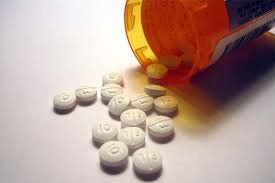This is an automatically translated article.
Lack of sleep, maintaining harmful eating habits, limitations in sports practice along with the pressure of lectures, financial worries are all the main causes of depression in students. causing them to neglect their studies as well as lead to other unpredictable consequences.1. Some alarming figures on suicide and depression among students
Teen suicides have continued to increase dramatically in recent years. The following alarming numbers remain:Every 100 minutes, a teenager commits suicide. Suicide is the third leading cause of death for young people aged 15 to 24 years. About 20% of adolescents experience depression before reaching adulthood. Between 10 and 15% experience symptoms at the same time. Only 30% of depressed adolescents are receiving treatment. The percentage of high school students who said they had serious intentions of suicide fell from 29% in 1991 to 14% in 2009. However, the rate has increased since then. reached 17% in 2017. The same percentage for students who reported having attempted suicide remained relatively stable during the 1990s and early 2000s (between 7 and 9%) but decreased from 8% in 2005 to 6% in 2009. This trend reversed in 2011, with rates increasing to 8%/year and 9% in 2015, before falling to 7% in 2017.
A much smaller percentage, 2 up to 3% of high school students reported needing medical attention due to a suicide attempt, and the rate remained constant from 1991 to 2009. However, this proportion increased from 1.9% in 2009 to 2. .8% in 2015. In 2017, this proportion was 2.4%.
The percentage of girls who said they had serious thoughts about suicide (22% and 12% respectively in 2017) was higher than boys (9 and 5%) and needed care health care (3.1 and 1.5% respectively). However, men are much more likely to successfully commit suicide.
In 2017, 9th grade girls were almost twice as likely to attempt suicide as their 12th graders (11 vs. 6%). There were no notable differences in levels between girls who actually thought about suicide (20 to 23%, by grade level) or reported their suicide attempts requiring medical attention (2 ,5 to 3.8%). Among males in 2017, 12th graders were 15 percent more likely than 9th graders to report serious suicide, respectively.
Some adolescents are more at risk of depression and suicide than others. These factors include:
Teenage girls develop depression twice as often as boys. Adolescents who are abused and neglected are particularly at risk. Teens with chronic illnesses or other physical conditions are at risk. Teens with a family history of depression or mental illness. Teens with untreated mental or substance abuse problems: About two-thirds of adolescents with major depression also face other mood disorders such as arrhythmias, anxiety, and depression. anxiety, antisocial behavior, or substance abuse. Young people have experienced trauma or family breakdown, including divorce and the death of a parent.

Trầm cảm ở học sinh đang gia tăng đáng kể trong những năm gần đây
2. Depression, bipolar anxiety disorder in students
Lack of sleep, maintaining unhealthy eating habits, and limited physical activity are all major causes of depression in middle and high school students.Along with the pressure of the classroom, financial worries, overtime work and broken relationships combine to create a mental and physical burden that causes students to neglect their studies as well as lead to social systems. other unforeseeable consequences.
3. The risks and consequences that depression causes for students.
If depression is left untreated in high school, middle school, or high school students, it can lead to emotional, behavioral, and health problems that affect every area of a teen's life. youth. Complications related to teen depression can include:Alcohol and drug abuse Learning problems Family conflicts and relationship difficulties Teenage breaking of the law Attempts to commit suicide or suicide Dealing with negative mental health effects from the college environment. Students who have not experienced this new life will have to deal with tuition and living debt on their own. Besides, their job prospects with university degrees after graduation are also assessed as lower than previous generations. The above raises concerns about depression among students today.
Students suffering from depression will be more prone to negative problems such as alcohol use, drug addiction, as well as starting risky sexual habits to eliminate emotional pain. are classmates of the same age who do not have this mental illness.
4. Problems with school love
Breaking up with a lover often pushes students into a state of depression because of negative thoughts about themselves, difficulty sleeping and difficulty controlling thoughts. It is estimated that 43% of students will suffer from insomnia within months of breaking up. They are often those who have experienced indifference and abuse in childhood, have insecure emotional attachments, feel betrayed easily, and are less mentally prepared for the relationship. break.Fortunately, time is the most effective remedy for post-breakup depression. Cognitive-behavioral therapy, interpersonal therapy, and especially psycho-healing therapy are also therapeutic processes that are reliable in providing a mental boost to emotionally tormented students. .

Trầm cảm ở học sinh dẫn đến nhiều hệ lụy khôn lường
5. Student suicide
In the United States, suicide is the second leading cause of death among 15- to 34-year-olds. Up to 8.3% of young people between the ages of 18 and 25 maintain extreme thoughts in suicide.And the core cause of this serious suicide rate is depression, bipolar anxiety disorder. In addition, there are other causes such as:
Substance abuse Family history of depression and mental illness Pre-existing suicidal thoughts Experiencing a lot of psychological pain Weapons and Injury Control Interactions with students who exhibit signs of promoting suicide Show signs of self-destruction such as self-burning and slitting.
6. The diagnosis and treatment of depression in students
The university environment always creates pressure for students, that's why the care and sharing from family, friends, faculty and school counselors always become very necessary for students. staff, especially those who exhibit or are suffering from depression.Children themselves often become passive in seeking help with depression due to fear of social stigma. A mental health assessment that includes the child's early development and family mental illness history, classroom performance, and any self-destructive behavior should be used as a baseline. topic for the treatment plan.
The best solution to improve depression in students is often a combination of antidepressant medications and direct communication therapy, such as cognitive behavioral therapy, therapy personal interaction. Regular exercise, healthy diet and proper rest will also contribute significantly to repelling depression in students.
In case you suspect yourself or a loved one has signs of depression, the patient needs help and advice from a doctor to get treatment, to avoid the bad consequences that the disease causes.
Psychology - Vinmec International General Hospital has the function of examining, consulting and outpatient treatment of psychological problems and psychological health. With modern equipment, skilled doctors, together with the implementation of psychological tests, intensive psychotherapy for diagnosis and treatment, in order to bring the best medical examination and treatment effect. for patients.
Please dial HOTLINE for more information or register for an appointment HERE. Download MyVinmec app to make appointments faster and to manage your bookings easily.
References: childtrends.org, healthline.com, discoverymood.com, mayoclinic.org












